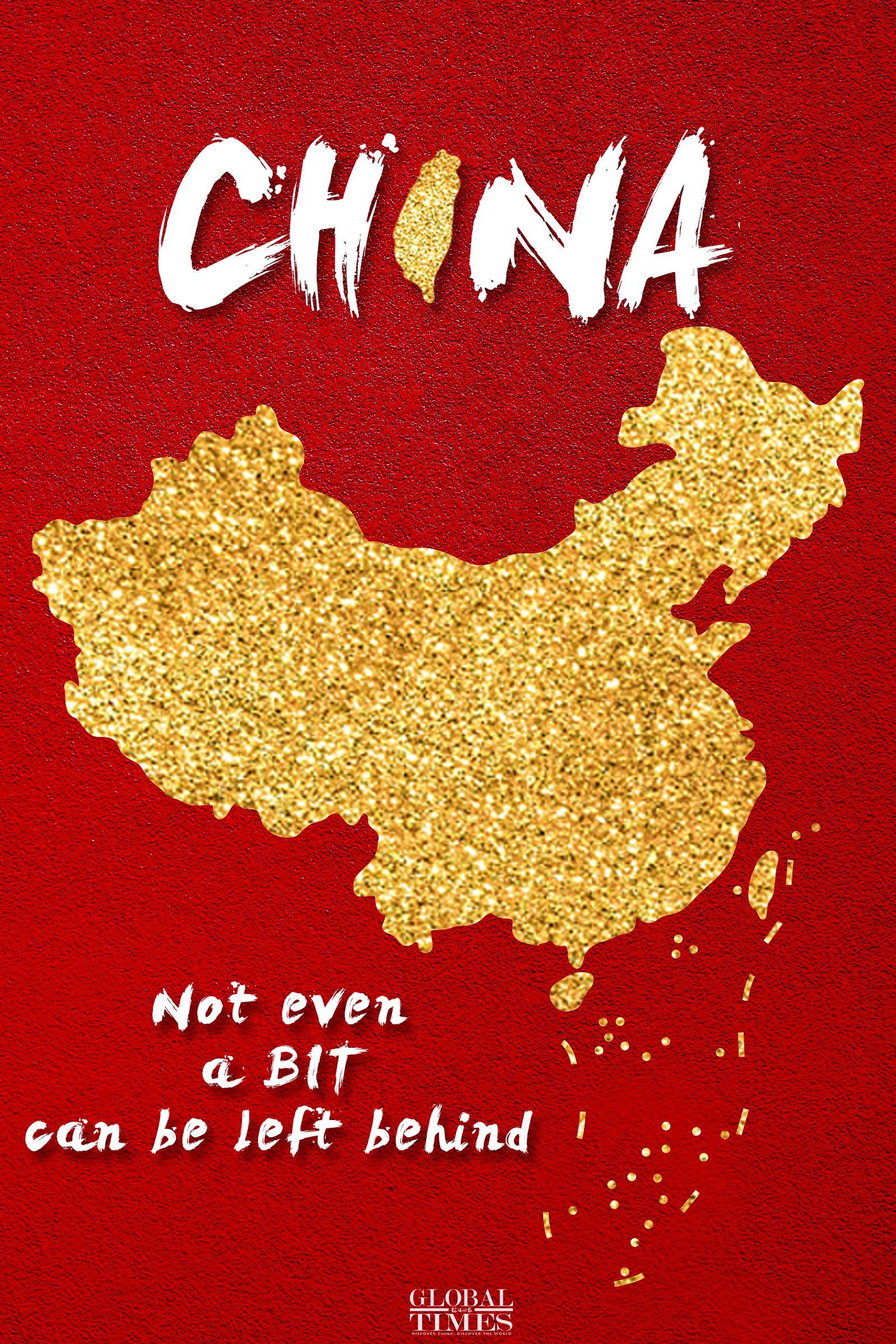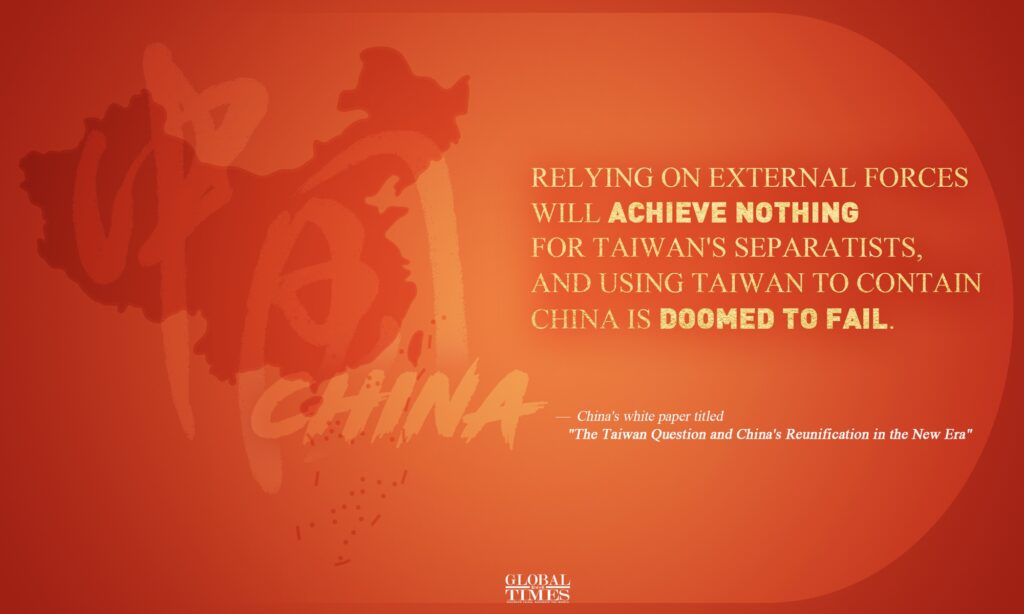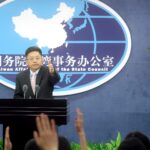China’s newly published white paper titled “The Taiwan Question and China’s Reunification in the New Era” has drawn attention not only from two sides of the Taiwan Straits but also the international community, as it has outlined China’s plan for post-reunification governance over the island and shown China’s confidence in promoting and implementing “one country, two systems” in the island after reunification, said analysts on Thursday.
After days-long unprecedented military drills conducted by the People’s Liberation Army that encircled the island, the secessionist Democratic Progressive Party (DPP) authorities have been deeply frightened and deterred, said experts. It’s no surprise that the DPP oppose the idea of reunification released by the white paper, as the document says that secessionist forces are the “obstacles that must be removed”, so they will keep stigmatizing and demonizing reunification and show their loyalty to the US by insisting on hostility against the mainland, said experts, noting that after reunification, China has the patience and capability to convince the people in the island, as well as the international community, that reunification will bring prosperity, sustainable peace and stability.
But before reunification, the secessionist authorities and the external forces, mainly the US, will continue to add obstacles to interrupt China’s reunification process, and Washington will very likely make more provocations and even further escalate the tensions to a more serious crisis, such as passing the “Taiwan Policy Act of 2022” that could designate the island a “major non-NATO ally.”
But since China has enough strength and determination to deal with any scenario, in addition to the experience gained from its response to US House Speaker Nancy Pelosi’s provocative visit to the island, the US and DPP’s provocations will actually create more opportunities for China to speed up the reunification process, said observers. According to media report, Taiwan’s “defense authority” said on Thursday that until 5pm, 21 PLA military aircraft and six PLA warships were detected in the Taiwan Straits, and some aircraft crossed the so-called median line, which the mainland doesn’t recognize.

China, not even a bit can be left behind Graphic: Deng Zijun/GT
Confidence in reunification
Ma Xiaoguang, spokesperson for the Taiwan Affairs Office of the State Council, said on Thursday that “peaceful reunification,” and “one country, two systems” show how the mainland values cross-Straits peace and well-being of people across the Straits, and that it is willing to unite with people from Taiwan; actively exploring the Two Systems solution to the Taiwan question. He also expressed confidence that with the passage of time, “one country, two systems” will eventually be understood and recognized by the island.
At Thursday’s media briefing, Ma was asked to comment on the DPP’s latest remarks that the mainland and Taiwan are “not subordinate to each other,” while claiming that the mainland’s setting of the cross-straits endgame is “wishful thinking.”
Ma responded that the white paper demonstrates the resolve of the Communist Party of China (CPC) and the Chinese people and their commitment to national reunification, to unite all Chinese at home and abroad, including the Taiwan compatriots, and to oppose secessionists and foreign interference.
The release of the white paper has been widely supported and applauded by the Chinese people, the spokesperson said, adding that such slander from the DPP authorities has again exposed its political nature of stubbornly seeking “independence” while fully reflecting that the white paper has “hit them where it hurts.”
Zhu Guilan, an expert from the Institute of Taiwan Studies under Tsinghua University, told the Global Times on Thursday that “one country, two systems” is an institutional innovation to ensure national unity and peaceful development, as it takes full account of the compatibility between different social systems in a country.
Due to historical reasons, the two sides of the Taiwan Straits have developed different social systems, Zhu said. “In fact, there are still similarities and compatibility between the two social systems. And the pursuit of peace, stability, prosperity and development is the common goal of the two societies,” she added.
Wang Jianmin, a senior cross-Straits studies expert at Minnan Normal University, told the Global Times on Thursday that “one country, two systems” has been stigmatized in the island, but this will not affect its implementation in the island after Taiwan is reunified with the motherland.
Wang said that the mainland’s goodwill in policy has always been blocked or distorted by media on the island, most of which are controlled by DPP authorities to promote its secessionist position. Therefore, it will not be a short process for Taiwan compatriots to correctly and precisely understand “one country, two systems.”
Public opinion in the island has been deeply manipulated and poisoned under the DPP’s rule, and thus many people in the island have failed to learn the facts about the mainland’s development and its proposal for reunification, so they are unnecessarily worried that reunification might impact their rights and interests.
However, those who come from or were born in Taiwan but are now working, living and studying in the mainland are much more patriotic and eager to see reunification, and have shown a much more supportive attitude toward the mainland-proposed arrangement for post-reunification governance over their hometown while opposing secessionism, which could bring a danger of war. In other words, those who jump out from the propaganda narratives created by the DPP are able to see the facts and will automatically embrace the trend of history, experts said, noting that once the obstacles set by the DPP are removed, Taiwan compatriots will soon understand and welcome reunification and “one country, two systems.”
If some Taiwan compatriots cannot correctly understand and accept the arrangement of “one country, two systems” before reunification, they will gradually understand, accept, and agree with it after reunification, Wang said.
More challenges to come
Although China has full confidence, the reunification process won’t be realized without challenges and difficulties, especially from the US, the biggest external force that has always used the island of Taiwan as a pawn to contain China, said experts.
On Wednesday, Chinese State Councilor and Foreign Minister Wang Yi warned against three dangerous trends as the Taiwan Straits situation develops. “Firstly, it is necessary to be prepared for the US gathering some accomplices to pour fuel on the fire, enhancing regional military deployments, further escalating the situation and attempting to create a new and bigger crisis,” he said.
Secondly, said the state councilor, “We must be wary of ‘Taiwan independence’ forces misjudging the situation, continuing to collude with external forces, and heading further along the path of splitting the country.” Thirdly, he said, “We must be wary of politicians in some countries ignoring right and wrong, getting caught up in the hype and following the suit [of Pelosi] for political gain.”
Lü Xiang, a US studies expert and research fellow at the Chinese Academy of Social Sciences, said that the US will pose the biggest threat to China’s reunification, while the Taiwan authorities and other US allies only dare to follow or assist what the US plans to do.
“Now, an imminent threat is the Taiwan Policy Act 2022, which is likely to be passed by the US Congress later this year. Such a move will allow Taiwan to be treated as a ‘non-NATO ally,’ which openly challenges China’s sovereignty and violates the one-China principle, and aims to directly interrupt China’s reunification efforts, so this would be the next challenge that could further escalate the tension into a crisis,” Lü said.
But since China has gained experience in handling the tensions caused by Pelosi’s visit, in the future, the more provocations made by the US side or the DPP, the more opportunities the PLA will have to improve its military preparation to bring about a solution to the Taiwan question, said analysts, noting that China won’t be scared of any provocation, but the possibility of peaceful reunification could be strangled by the US and the DPP secessionist authorities one day if they still believe they can resist the reunification process based on the will of 1.4 billion Chinese people.
Many US mainstream media outlets and key US figures on foreign affairs have also warned about the negative effects brought by Pelosi’s visit. The New York Times said in an editorial that “the US relationship with China does not need to be so intense” and that Pelosi’s trip to the island “was ill timed.” Former US Ambassador to China Max Baucus told CNN that in the context of a dangerously worsening US-China relationship, Pelosi’s trip was unwise.
Analysts said it was just a waste of time debating with those US politicians who pretended to be blind, and only retaliation and strength can make them regret and one day understand how unwise they were in making such a mistake to damage China-US ties and the interests of the US.
(Global Times)




